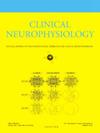High-frequency nerve ultrasound in Guillain-Barré syndrome
IF 3.6
3区 医学
Q1 CLINICAL NEUROLOGY
引用次数: 0
Abstract
Objective
To explore the utility of high-frequency nerve ultrasound (HNUS) of peripheral nerves in patients with Guillain-Barré syndrome (pwGBS) at time of diagnosis and the following 6 months.
Methods
Cross-sectional area (CSA) of brachial plexus nerves and upper limb peripheral nerves (20 sites total) were determined with HNUS in 21 pwGBS and 19 healthy subjects. PwGBS were examined 11 (median, interquartile range 6–14) days from motor symptom onset, with follow-up examinations 4 and 26 weeks later. Additionally, Medical Research Council sum-score and GBS Disability Score were assessed.
Results
At baseline, pwGBS had increased CSA at 16 out of 20 sites compared to healthy subjects. Sum-score of cervical roots C5–C7 decreased from baseline to 4 weeks (−0.042 (CI:−0.075; −0.008) cm2; p = 0.017) and further decreased to week 26 (−0.039 (CI: −0.067; −0.012) cm2; p = 0.008). In the interscalene passage, C5–C7 sum-score decreased from baseline to 26 weeks (−0.073 (CI: −0.127; −0.018) cm2; p = 0.012). Sum-score of proximal limb nerve CSA decreased from week 4 to week 26 (−0.038 (CI: −0.076; -0.001) cm2; p = 0.047). HNUS did not consistently correlate to clinical severity.
Conclusions
HNUS enables detection of widespread acute nerve enlargements. Follow-up showed variable regression of nerve swellings at anatomical sites.
Significance
HNUS may add information in diagnosis and monitoring of GBS.
格林-巴罗综合征的高频神经超声诊断
目的探讨高频神经超声(HNUS)在格林-巴- 综合征(pwGBS)患者诊断时及术后6个月外周神经的应用价值。方法用HNUS测定21例pwGBS和19例健康人臂丛神经和上肢周围神经的横截面积(CSA),共20个部位。在运动症状出现后11天(中位数,四分位数范围6-14)对PwGBS进行检查,并在4周和26周后进行随访检查。此外,还评估了医学研究委员会和GBS残疾评分。结果在基线时,与健康受试者相比,pwGBS在20个部位中有16个部位的CSA增加。从基线到4周,颈根C5-C7的总评分下降(- 0.042 (CI: - 0.075; - 0.008) cm2;p = 0.017),并进一步减少到第26周(- 0.039 (CI: - 0.067; - 0.012) cm2;p = 0.008)。在鳞片间通道,C5-C7总评分从基线到26周下降(- 0.073 (CI: - 0.127; - 0.018) cm2;p = 0.012)。从第4周到第26周,肢体近端神经CSA总分下降(- 0.038 (CI: - 0.076; -0.001) cm2;p = 0.047)。HNUS与临床严重程度不一致。结论shnus能够检测到广泛的急性神经扩张。随访显示解剖部位神经肿胀有不同程度的消退。意义:hnus可为GBS的诊断和监测提供信息。
本文章由计算机程序翻译,如有差异,请以英文原文为准。
求助全文
约1分钟内获得全文
求助全文
来源期刊

Clinical Neurophysiology
医学-临床神经学
CiteScore
8.70
自引率
6.40%
发文量
932
审稿时长
59 days
期刊介绍:
As of January 1999, The journal Electroencephalography and Clinical Neurophysiology, and its two sections Electromyography and Motor Control and Evoked Potentials have amalgamated to become this journal - Clinical Neurophysiology.
Clinical Neurophysiology is the official journal of the International Federation of Clinical Neurophysiology, the Brazilian Society of Clinical Neurophysiology, the Czech Society of Clinical Neurophysiology, the Italian Clinical Neurophysiology Society and the International Society of Intraoperative Neurophysiology.The journal is dedicated to fostering research and disseminating information on all aspects of both normal and abnormal functioning of the nervous system. The key aim of the publication is to disseminate scholarly reports on the pathophysiology underlying diseases of the central and peripheral nervous system of human patients. Clinical trials that use neurophysiological measures to document change are encouraged, as are manuscripts reporting data on integrated neuroimaging of central nervous function including, but not limited to, functional MRI, MEG, EEG, PET and other neuroimaging modalities.
 求助内容:
求助内容: 应助结果提醒方式:
应助结果提醒方式:


